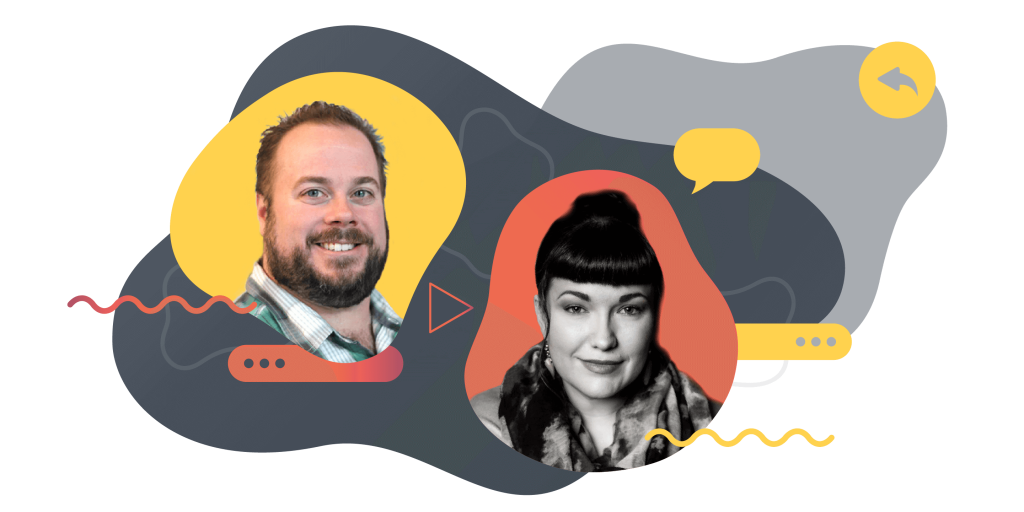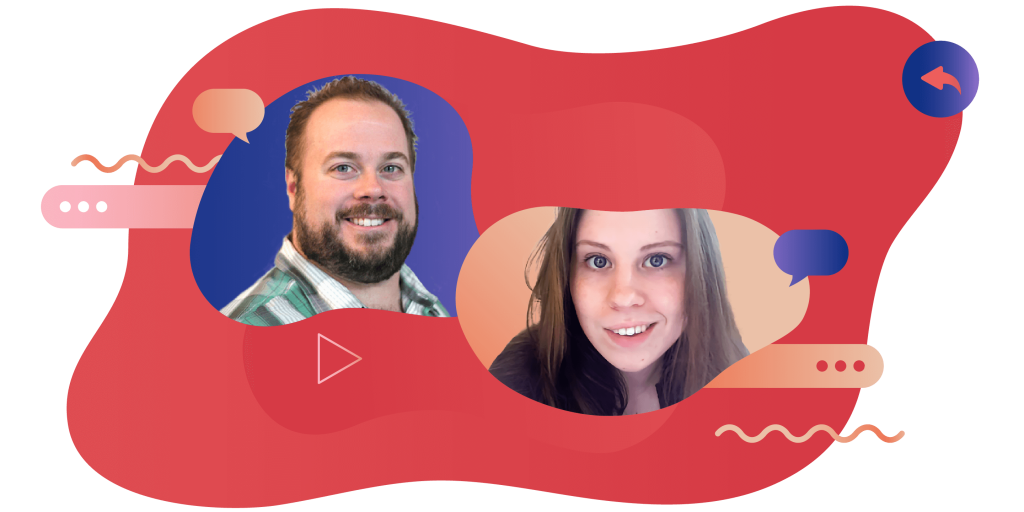Support leaders are likely to encounter a need to scale their teams at some point in their career.
Brendan Ledger, Director of Support at 7shifts, has a three-step framework that sets your team up for success and helps you scale effectively and quickly.
How do you view the evolution of scale when it comes to support?
Brendan: I am quite passionate about this. When you look at all the venture money coming into companies in Canada, especially in SaaS.
These companies are growing faster than their support teams and processes are: The product is growing, partnerships are being added, and revenue increases. In the early days, as the support team ramps up, you absorb many things to support customers and support other teams.
You end up filling in gaps for missing functionality within the product or putting band aid processes in place to support revenue team efforts. As further investment comes and your customer base is growing rapidly, you realize that scaling is super important.
It’s important to start by having a lot of empathy for the role of a support rep and the job they do. It’s not easy to deliver exceptional customer service in a fast paced, forever changing environment.
You need to look at all the things the team is spending their time on and what is making their job difficult. This is where you can see burn out within a team and a drop in engagement with the work they do.
Don’t be afraid to challenge the status quo and start to push back on wasteful or poorly built processes. If you don’t, your problems will scale with you as your customer base grows. I really believe it’s everyone’s responsibility to scale support and my role is to educate the business on how we do that.
The questions really are: What problem are we solving for the customer? Are we solving it in the most effective & efficient way for our team? You need to listen to your team to find these strains so you know how to adjust and improve.
It’s important to keep the customer at the heart of all the questions you ask, the customer experience needs to be the main focus so we are always solving for their needs which also helps you get alignment cross-functionally.
And once you have hit this point, what is your approach or philosophy to scaling support?
Brendan: Listen to the team first. Listen to your managers and agents and take feedback from other departments. Assume everyone is doing a great job with the knowledge and tools provided to them today, and avoid making assumptions. Then I combine that with metrics to gain a full picture of what’s happening.
You cannot come in guns blazing to force change. Spend time building trust with the team and your internal stakeholders. Find your allies and the champions who will help you drive changes forward.
Set and communicate a vision for the team – it doesn’t need to be your long-term strategy but enough to get the team into a scalable operating state.
Take an agile approach to slowly improve, giving the team time to learn and adjust as you bring in new changes. Try not to do too much all at once or too quickly when the team isn’t prepared.
My philosophy in leadership & life is that you have to set people up for success and only then ask them to succeed. Invest in the foundations your team needs to make this possible. Metrics are one thing, but what people tell you is something else. Let people know cross-functionally what your focus is and what your team needs from them to be successful.
The foundations are your workflows, processes, systems (tools), training, and most importantly- knowledge management. I believe that knowledge management is the piece that underlies all of these things. If we are going to have better processes, training, and systems, then we need to have a centralized repository the team can refer back to at any time.
Quite often the knowledge your team needs lives across multiple platforms or in someone’s head which is slowing your team down from doing their job everyday. When I scale a team, these are my first focuses.
Craig: As you identified, this scale can happen fast. That implies fast change might be what is expected. The philosophy you just laid out doesn’t sound speedy.
How do you bridge that gap with leadership and gain buy-in?
Brendan: I am lucky that I am at a high level of trust. I came in and was confident in what I needed to do, how to do it, and clear on how long the steps would take. You also need to elevate what the team is accomplishing now to highlight their success and illustrate progress all the time as they move through changes.
We need to tell our story to our leaders or to leaders of other teams. For example, we would love to help with product adoption or building advocacy with our customers but to get there, we need to address what the team needs to be successful at scale first.
These are natural things we do every day in conversations with customers even without a focused effort on them. However, if I tell the team that is what we will focus on too early in the process, they are going to drown, because what is making their life hard is not having those foundations in place.
So we need to manage expectations within the business but let them know we will be able to achieve the cool things when the team is ready to go for it.
It’s a time investment at the start putting the foundational pieces in place and for the most part, they will constantly go through iterations as the team grows and the business changes focus.
If you have a solid knowledge management strategy underlying all of these pieces, it helps the team capture new information and change it into known information, providing them with a repository to refer back to when they get stuck.
There is space for the team to do some cool stuff in this phase where we can experiment with different initiatives but just don’t make it the main focus.
How do you get a sense that this approach is working?
Brendan: Again, listen to the team and different departments. Seek out feedback and look for indicators.
A big indicator for me is by asking myself “Is the team sustainable?”. When a team is self-sustaining it means that when you are on vacation. your team is operating without you and you’re not coming back to put out fires.
Your reports can operate without you and their reports operate without them, etc. It takes a lot of time to build this but by slowly stepping back or just by having time off will allow you to test this out.
It’s highly dependent on the culture within the team too. You need to ensure you have a high level of trust so people feel like they have the autonomy to do their role and feel empowered to make decisions when knowledge or answers aren’t available.
In a high growth SaaS environment, you often don’t have a lot of processes in place. Some things are obvious, such as customer authentication, others may not be, such as a customer problem not seen before.
In these instances, you want to ensure your team understands the level of service we want as an organization to deliver for our customers and they feel empowered to make those decisions with guiding principles while empowered with the trust to do so.
So you’ve laid the foundations, what are the next steps to scaling?
Brendan: The way I break it out is:
- Foundations
- Building blocks
- Cool stuff
We talked about foundations already. Building blocks are the data that comes from the foundations.
Now that the team is at an operating scale, you can get a true view of the inputs & outputs of the team. You can build KPIs that focus on the productivity and the experience you are offering customers and the data is less disputable.
You need to trust that it is a good reflection of the truth of what’s happening day to day/month to month within the team. The data will inform your decisions on forecasting, headcount and give you a good understanding of what is driving volume into your team.
Then you can start to look at things like automation/ticket deflection, coverage vs. volume alignment, or if time is spent on product issues or workflows that once they improved it will enhance the user experience.
It’s unlikely that another team has as many conversational touch points as Support so start sharing your data with other teams and ensure there is a regular cadence with Product & Engineering teams to talk through what we are seeing.
The cool things are being able to give the team a focus on something that goes beyond the traditional support center model.
It’s important to align the team’s work to the overall business objectives – get revenue and retain it.
The beautiful thing about support is that we already make a big impact on those objectives through everyday conversations with customers. We provide exceptional support which leads to advocates, we help them understand product features and help them adopt new features.
We know when they are outgrowing their current plan and need to upgrade or expand. And finally, we provide fast and quick resolutions that make them want to stay with us. TSIA refers to this as LAER Land, Adopt, Expand & Retain. What’s hard is drawing the line between those everyday conversations back to how they made an impact.
So we should make it easy to draw those lines by providing a way for the team to capture what’s happening in their conversations and then working with your data team to understand the impact.
Once we have built some solid muscle doing these “cool things”, it becomes a lever we can pull depending on what’s in focus for the business at the time.
Craig: A lot of what we’ve explored here is specific to support. We know support is part of a wider ecosystem…
So in closing, how does support help scale in the cross-functional environment?
Brendan: As I said, it’s my role to educate the rest of the business about Support and a big part of this is to put support on the map. Do people know support exists, but are they truly on people’s minds? I have this view, it might be controversial, but I believe that Support is the layer that surrounds the customer, and the customer should be the center of the universe.
So anything you do that impacts the customer, impacts support. Therefore you have to educate that, if you are making a promise to the customer and setting expectations, either through a sale or a new feature release or whatever, then support needs to know in order to help meet that expectation.
So try to make support front of mind for people wherever you can and ensure there are feedback loops on all initiatives that touch the customer.













